In May 2024, IndiGo mentioned that the airline would launch a new “Business Product” on India’s Business and Busiest Routes. With IndiGo topping 60% of India’s domestic market share, there are many reasons why IndiGo wants to launch a “Business Product” at this point. They’ve intentionally kept the name and the offering ambiguous until they are ready to give it to us. IndiGo said they would dish out more information closer to their birthday, which is just a few days away now.
But I’d like to outline all the business models available when IndiGo launches it.
Why IndiGo wants to do it?
There are many reasons why IndiGo should enter this space. The foremost is that the Air India / Vistara combination is the only competition for a Business Class product. With Jet Airways’ departure from the market, over 10K Business seats per week evaporated from the market. Currently, across Air India, Vistara and Air India Express, 7K Business Class seats operate per week. (Data via Cirium, reported in The Hindustan Times. )
IndiGo, if it does not enter the game now, will be leaving money in this space.
Let’s use a simple example with a two-row four seats in each row configuration, standard on Air India and Vistara’s A320 aircraft. Assuming a Business Class flight in October 2024, operating on a Monday between Delhi and Mumbai, you will see fares between INR 31-37K.
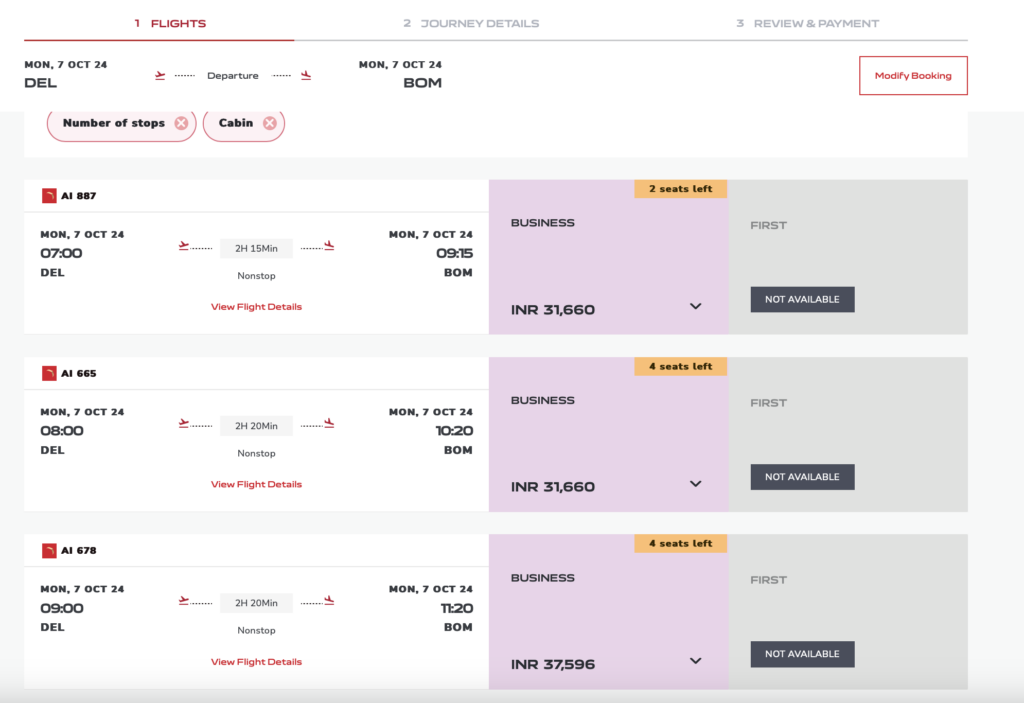
Usually, two business class rows would take the space equivalent of three Economy Class rows. So, in this case, 8 Business Class seats should at least make money worth 18 Economy Class seats to justify their existence. Here are the Economy Class prices for the same day on the same flights.
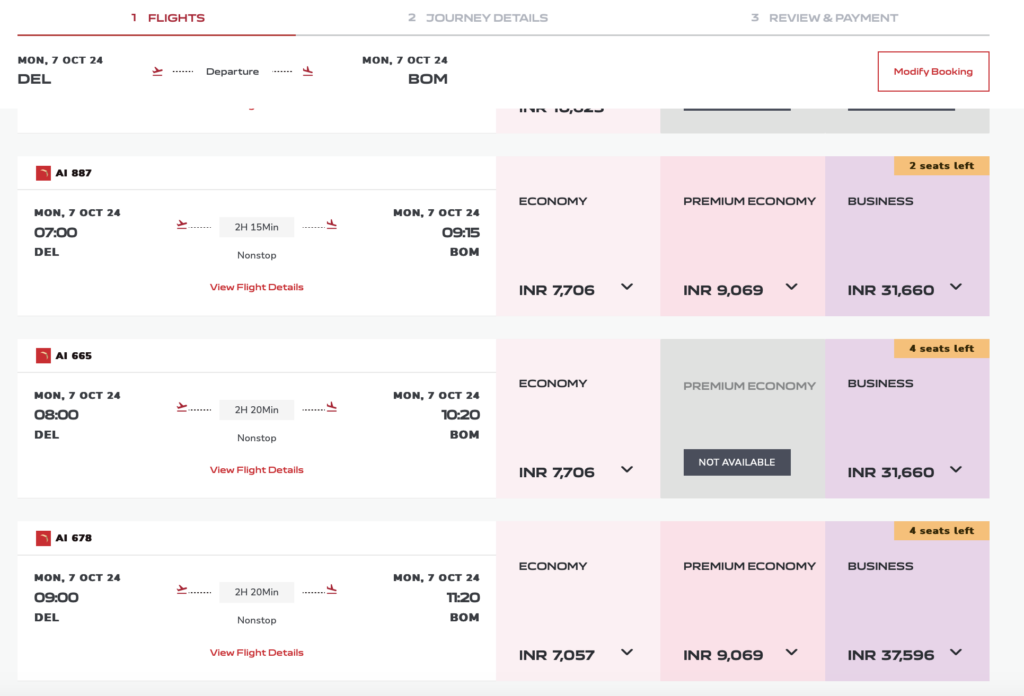
As you will note, the INR 7700 price on a Monday Morning Economy Class flight between Delhi and Mumbai would net INR 138,000 (assuming they all filled up at the same price, which they won’t because yield management will kick in). Stripping this pricing down even further for a 5% GST would be INR 131,500 for the airline, including airport charges.
If the entire Business Class cabin operates occupied, the airline will earn INR 254,000 (INR 2,26,800 after removing 12% GST), which is still significantly higher than the 18 seats in Economy. Even after deducting the higher cost of a meal and a lounge, which many business class passengers don’t use, the airline comes out ahead.
The margins are even fatter if we compare the pricing to IndiGo’s Economy Class.

The simple truth is that while Economy Class contributes towards the flight’s break-even, the business class cabin contributes the profit.
The other reason is for IndiGo’s ambitions. The airline is India’s dominant airline, and now it will fly even further with the XLR in 2025 and the A350s in 2027. On these aircraft, with the kind of fuel-heavy, these segments will be, IndiGo would ideally do well to have a premium configuration up front, which will be for the customers to pick if they want a more comfortable ride. Still, it will earn IndiGo more cash to keep the cabin slightly lighter. And allow their international customers to complete their journey inside the country with the same cabin experience rather than downgrading the experience.
What could they do?
Business models have evolved over the years, but here are the kinds we’ve seen around India for the past few decades.
All-Inclusive Business Class a-la Full Service Carriers
Major Indian full-service carriers, such as Air India, Vistara, Jet Airways and Kingfisher Airlines, have operated an all-inclusive business class, where the airline provides the following inclusions in the price of the business class ticket that you pay:
- A 40-43″ Seat Pitch and a 7″ Recline;
- A Cradle seat with about 22″ Width;
- Priority Check-in, Boarding and Baggage Handling;
- An elevated meal experience;
- Enhanced Baggage Allowance;
- Lounge, if available at the airport.
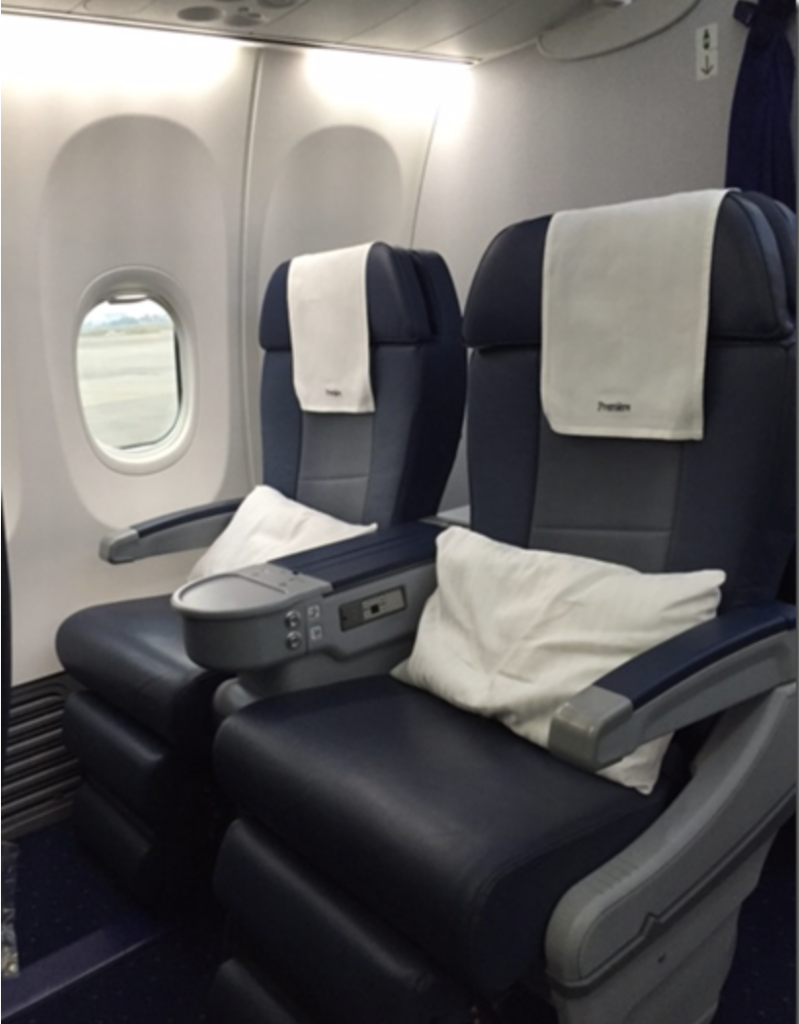
Jet Airways Business Class
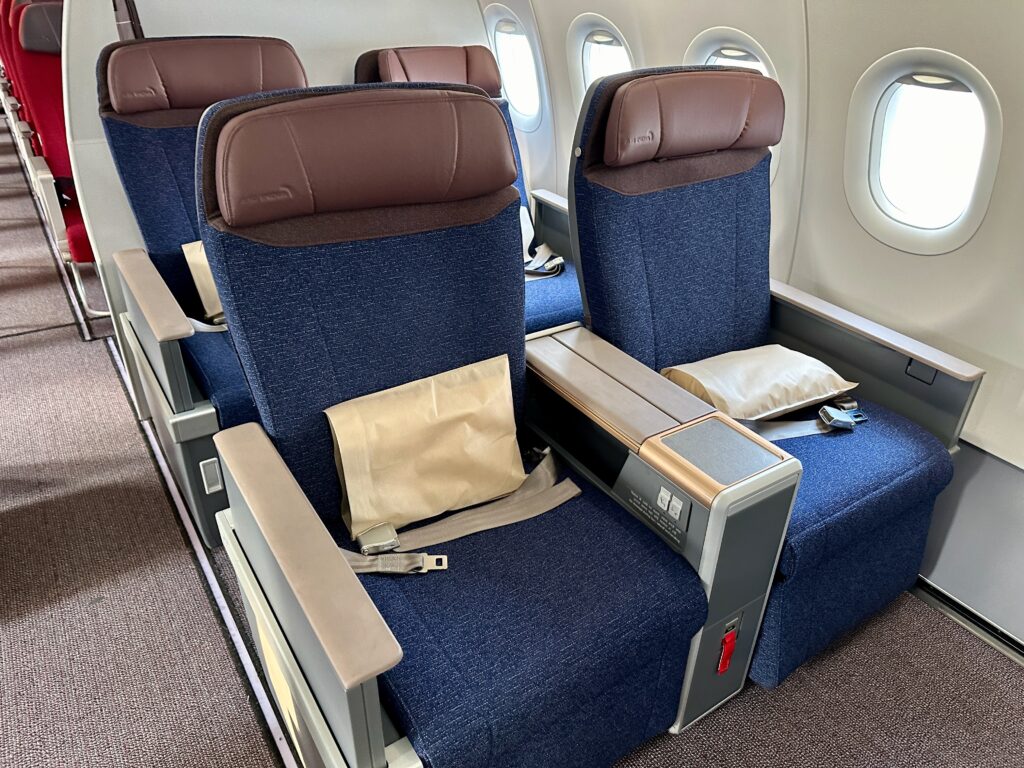
Air India’s new A320neo Business Class (MiQ)
The SpiceBiz Experiment
SpiceJet took over 30+ Jet Airways’ Boeing 737 aircraft when the airline went under. Instead of sending these for retrofits, SpiceJet had the same ambition as IndiGo for a while, and they operated the front cabin as SpiceBiz. SpiceBiz offered the following inclusions:
- A dedicated business class cabin with a 43″ seat pitch and 7″ recline
- Complimentary lounge access
- Higher baggage allowance;
- Gourmet meals
- Priority services
SpiceJet tried to sell its business class on price, a move I expect IndiGo to follow. SpiceJet had mentioned that they sold SpiceBiz at INR 16,000 per seat onwards, which was still undercutting the other airlines in the pre-COVID era when fares were not so strong.
The #SpiceBiz experience on @flyspicejet was reminiscent of Jet Premiere.
Felt nostalgic sitting on an old 9W bird. The service and crew (Rajesh and Anthony Gomes) were effective. Look forward to the return!
@tushar_yes #aviation #AvGeek #Avgeeks #SpiceJet pic.twitter.com/dpPz4MQuJs
— TANUJ GARG (@tanuj_garg) June 30, 2019
However, SpiceJet’s Business Class experiment only lasted about six months, and in October 2019, the airline initiated retrofitting its aircraft. In November 2019, the airline confirmed that it will close the SpiceBiz offering.
The Hybridisation Attempt: Air India Express’ XpressBiz
Air India Express has been the recipient of tearing growth. The airline was opportunistic in acquiring the Boeing 737-8 aircraft initially meant to be delivered to other carriers. The airline has received 29 such 737-8 airframes from Boeing, with at least 11 more designated to reach them in a pre-configured fashion (with business class seats).
Given the current supply chain challenges with acquiring seats, Air India Express has launched a business class offering with aircraft with business class cabin seats rather than waiting for a retrofit. When launched in December 2023, it was known as VistaVIP, but the airline rebranded to XpressBiz in March 2024.
AIX offers an increased baggage allowance of 40kg on international flights and 25 kg on domestic flights, hot meals and Xpress Ahead priority services at airports as a part of the XpressBiz offering.
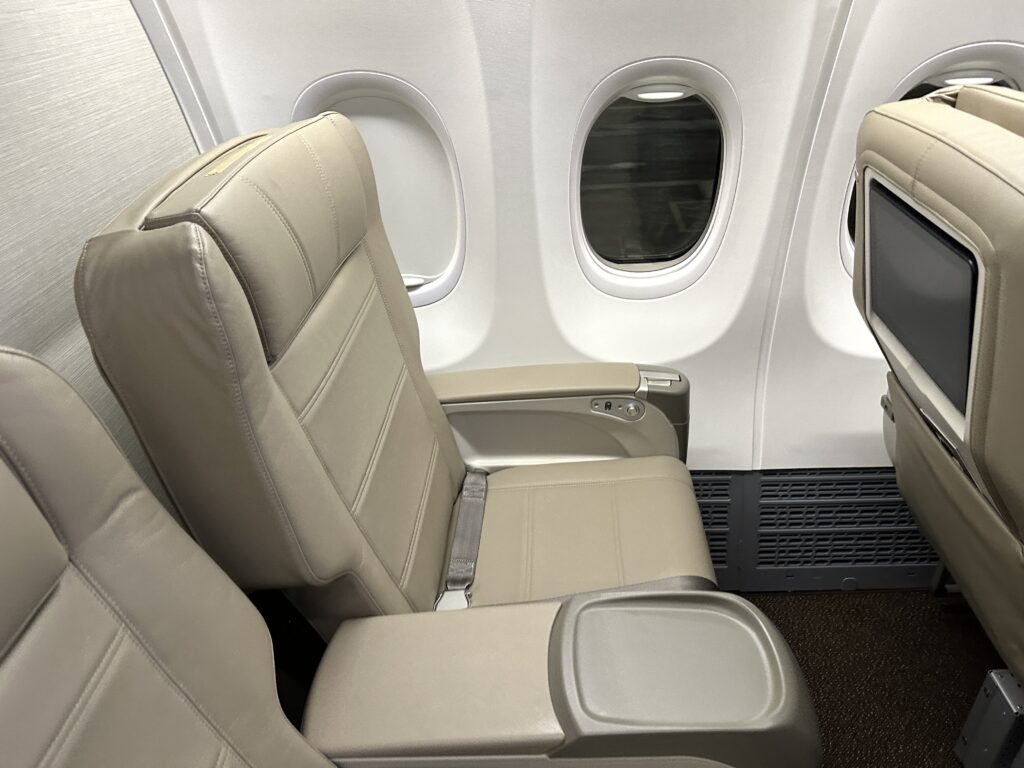
Air India Express seems to follow the real estate on a plane rule when pricing these tickets. They are not charging a premium but rather (at least) 2.25-2.5 times the Economy Class ticket, which is multiple in terms of the amount of space a business class seat takes on a plane compared to Economy Class on a narrow-body aircraft.

These are early days for the Air India Express, and they have the staying power to bankroll it as long as they want. Who knows if Air India Express might be inspired by the IndiGo launch and decide to move forward with XpressBiz as a feature rather than a bug in its plans.
Another smaller carrier, Star Air, is also following this approach.
The A-la-carte Approach: Akasa’s A++ Cabin
Akasa also received not-taken-up aircraft from Boeing, which allowed it to scale up quickly in the initial days. Akasa took over the aircraft designated for Jet Airways (about 11 of them) and landed in a similar situation to Air India Express. Akasa, however, had a slightly different approach compared to AIX.
At Akasa, the airline followed what I like to call the Spirit approach, where everything is sold a la carte. You pay for a ticket, which reserves you a spot on the flight, along with a 15 kg baggage allowance. Then, if you want a meal, you pay for it separately, and if you want a specific seat, you pay for it separately. I first saw this approach at Spirit Airlines in the US, which sold the front rows as “The Big Front Seat.”
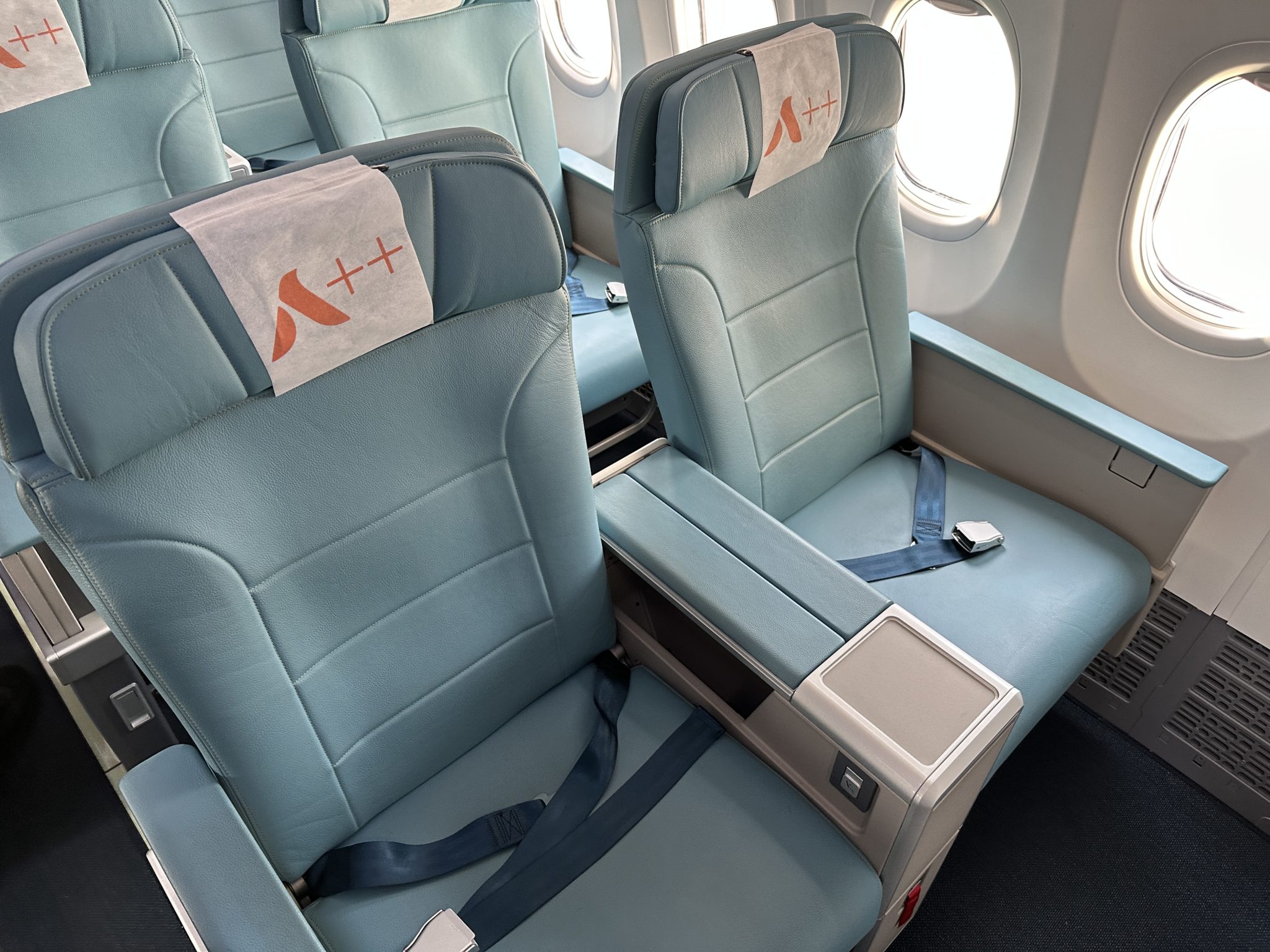
At Akasa, the airline branded the business class seats as A++ (A+ is their standard 3×3 Economy Class seats with extra legroom). The airline charges between INR 3,500 and INR 5,000 for the seat to be allocated. This does not get you any additional bags, priority boarding, or a meal.
What will IndiGo do?
It will be interesting to see what IndiGo does. IndiGo intends to add the “business product” only to its A321neo aircraft, of which the airline currently has over 100 in its fleet. These aircraft are currently configured with 232 Economy Seats (mostly). Most likely, the aircraft will be configured with 12 Business seats, and this sub-fleet will be designated for Metro operations, apart from important stations nearby, such as Dubai.
Going by the statements made by IndiGo and the CEO, Pieter Elbers, it seems that there might be a unique proposition customised to the Indian taste, which is value-centric. The airline has had months to see the performance of its competing options (Akasa’s A++ and Air India Xpress’ XpressBiz), and whether it will go with the hybridisation approach or the a-la-carte approach remains to be seen. I imagine they are heading the hybridisation way, but not the full package that includes a lounge. Perhaps an exclusive check-in counter, extra baggage allowance and services on board.
Given Recaro’s dealings with IndiGo since 2023, I’d say that the seats would be the Recaro R5 (earlier known as the CL4710), the only product that Recaro offers in the Single-Aisle Market. It remains to be seen whether these come in the usual design, where the seat pairs feature a central divider screen and padded winged head headrests, or if IndiGo tweaks the seats to make them unique to IndiGo just like Delta did (Factory Design did the design aspect). This seat also does very well with a smaller pitch, which would save the airline some space and add one more row of economy somewhere.
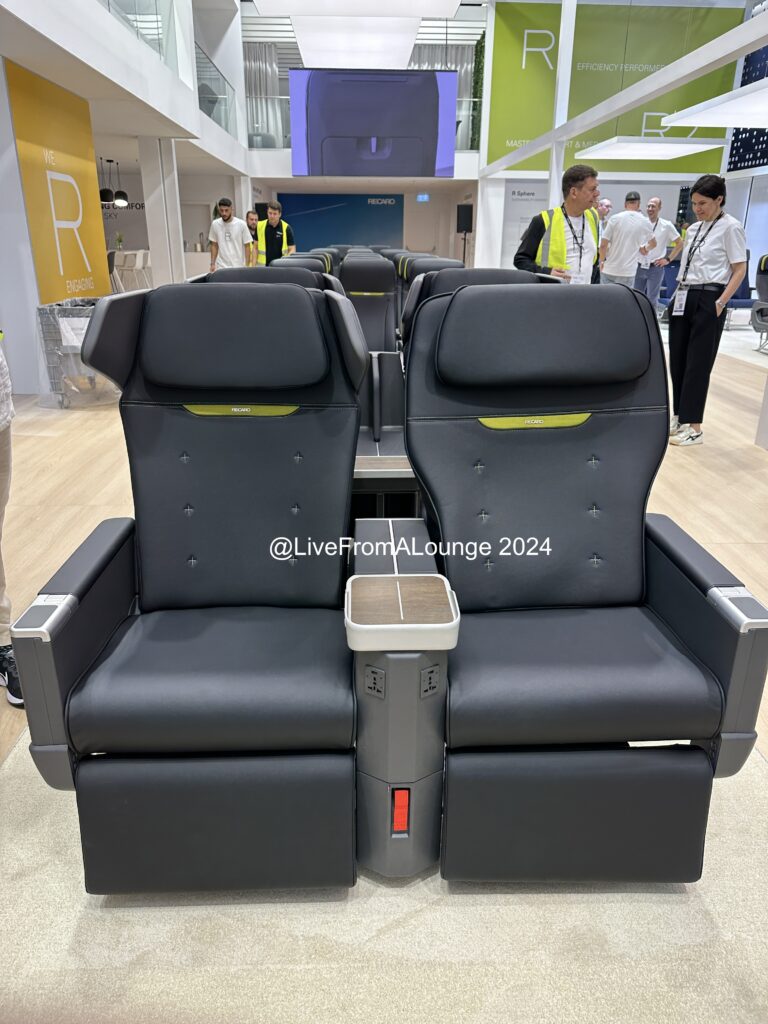
Recaro’s R5 Single Aisle Business Class seat
The question then remains: Are hot meals coming on board? And how will they price it? 2.5X of Economy, or much more?
Bottomline
As IndiGo turns 18, it will unveil the airline’s business product, which it first mentioned earlier this year. IndiGo will be the last Indian carrier to switch on a business product, but it will also be the largest one, so it matters to see what they have on board. Expect to see this product flying later this year onboard some IndiGo A321neos.
What do you think will be IndiGo’s take on a more premium product, apart from the broader seats? Do share your thoughts in the comments section below.
Liked our articles and our efforts? Please pay an amount you are comfortable with; an amount you believe is the fair price for the content you have consumed. Please enter an amount in the box below and click on the button to pay; you can use Netbanking, Debit/Credit Cards, UPI, QR codes, or any Wallet to pay. Every contribution helps cover the cost of the content generated for your benefit.
(Important: to receive confirmation and details of your transaction, please enter a valid email address in the pop-up form that will appear after you click the ‘Pay Now’ button. For international transactions, use Paypal to process the transaction.)
We are not putting our articles behind any paywall where you are asked to pay before you read an article. We are asking you to pay after you have read the article if you are satisfied with the quality and our efforts.


Leave a Reply